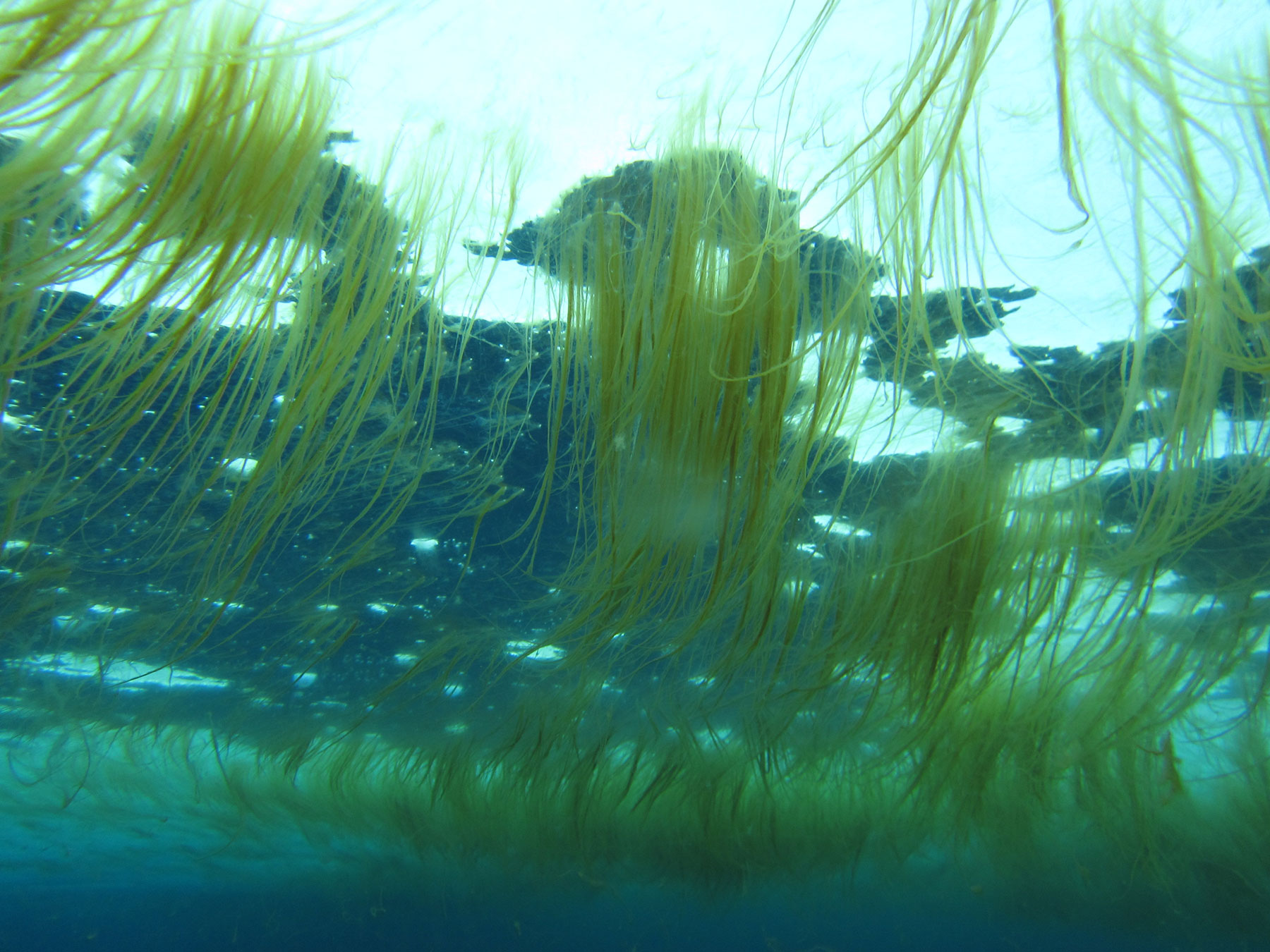Full Text
|
|
Diatoms can live almost anywhere, but one of the most unusual places is within sea ice. These single-celled algae concentrate in newly forming sea ice and tinge the slushy surface a golden brown. They live in small channels between ice crystals and also on algal strands that hang from the underside of the ice. When the spring melt comes, diatoms in the sea ice serve as the seed population for ice-marginal blooms. The use of polar marine diatoms as a proxy for past sea ice relies upon their abundance, diversity, and preservation. In sediments, the presence of obligate sea ice diatoms, those species whose habitat is limited to within the sea ice, is reliable evidence of overlying sea ice. However, these species tend to be lightly silicified and underrepresented in marine sediments. Hence, while their presence is diagnostic, their absence is more difficult to interpret. Consequently, most sea ice reconstructions rely on species common in the marginal ice zone, seeded from melting sea ice into the adjacent open water. Many of these taxa have robust frustules that are well preserved at the seafloor.
Diatom-based sea ice reconstructions date to the early 1980s, with increasingly quantitative work beginning in the mid-1990s and continuing today. Reconstructing past Southern Ocean sea ice presence is most readily accomplished in sediments with extant species, ground truthed by modern observations. Thus, it is more difficult to use diatom-based sea ice proxies for time periods that harbored extinct species because the paleoenvironmental affiliation of these species is uncertain. Several approaches, in combination, are possible to circumvent this issue. First, diagnostic evolutionary lineages can be traced (e.g., at present, many small pennate taxa within the genus Fragilariopsis are associated with sea ice)—but can we assume their ancestors had the same preferences? Second, specific morphologic characteristics (e.g., the development of resting spores or more heavily silicified winter stages) may have evolved following the initial or persistent occurrence of annual sea ice.
The use of diatom proxies for paleo sea ice extent also has its shortcomings, including biases associated with preferential grazing, water column dissolution, horizontal displacement by surface and bottom currents, and degradation within the sediments. Thus, while diatom assemblages reveal important clues to past sea ice presence, the imperfect sedimentary record of diatom assemblages has motivated development of new complementary biomolecular sea ice proxies.


